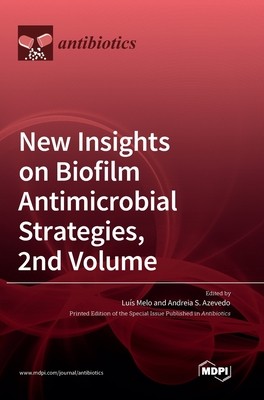
- We will send in 10–14 business days.
- Publisher: MDPI AG
- ISBN-10: 3036548025
- ISBN-13: 9783036548029
- Format: 17 x 24.4 x 1.4 cm, hardcover
- Language: English
- SAVE -10% with code: EXTRA
New Insights on Biofilm Antimicrobial Strategies, 2nd Volume (e-book) (used book) | bookbook.eu
Reviews
Description
In biofilms, microorganisms are able to communicate together and assemble by themselves, creating a consortium with different properties from the original free-floating microorganisms. In fact, biofilm cells bind strongly to a living or non-living surface, enclosed in a self-produced extracellular matrix that is composed of extracellular polymeric substances. One benefit of this lifestyle is the increased resistance or tolerance to antimicrobial agents (e.g., antibiotics). Hence, research on the development of alternative strategies to prevent and control biofilms is highly relevant for society in terms of human health, industry and the environment. Different approaches to prevent or control biofilms using antibiotic alternative strategies were submitted to this Special Issue.
EXTRA 10 % discount with code: EXTRA
The promotion ends in 4d.13:55:44
The discount code is valid when purchasing from 10 €. Discounts do not stack.
- Publisher: MDPI AG
- ISBN-10: 3036548025
- ISBN-13: 9783036548029
- Format: 17 x 24.4 x 1.4 cm, hardcover
- Language: English English
In biofilms, microorganisms are able to communicate together and assemble by themselves, creating a consortium with different properties from the original free-floating microorganisms. In fact, biofilm cells bind strongly to a living or non-living surface, enclosed in a self-produced extracellular matrix that is composed of extracellular polymeric substances. One benefit of this lifestyle is the increased resistance or tolerance to antimicrobial agents (e.g., antibiotics). Hence, research on the development of alternative strategies to prevent and control biofilms is highly relevant for society in terms of human health, industry and the environment. Different approaches to prevent or control biofilms using antibiotic alternative strategies were submitted to this Special Issue.


Reviews